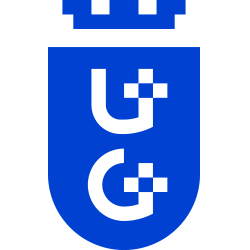
ul. Bażyńskiego 1a 80-952 Gdańsk
Poland
ISNI ID: 0000 0001 2370 4076
GRID ID: grid.8585.0
Bogdan Burliga
Medieval Studies, Issue 21 (2017), 2017, pp. 15 - 35
https://doi.org/10.4467/25442562SDS.17.001.7003One of the most interesting late‑medieval literary monuments is the military textbook entitled The Book of Deeds of Arms and Chivalry (beginning of the 15th century). The fact that the author of this book on war and chivalry is a woman, Christine de Pizan, is understandably arousing the interest of medievalists – but it is only one of the fascinating issues connected with this work. Equally interesting is the fact of the author’s reference to the antique models and their presence in the textbook. The aim of this paper is to engage in polemics with the thesis that invoking antique authorities was merely a form of “rhetorical” strategy of de Pizan, who wanted to demonstrate her knowledge of classical literature. My intention is to remind the readers that the function of the antique auctoritates (mainly Vegetius and Frontinus, as well as Valerius Maximus) was not purely ornamental, intended to demonstrate the author’s erudition, but that the quotations from the works of antique writers and the references to them constituted an integral part of the author’s line of thinking and argumentation. Their presence in the textbook testifies to the timeless value of the recommendations of the antique writers and their decisive role in the author’s argumentation.
Bogdan Burliga
Medieval Studies, Issue 22 (2018), 2018, pp. 42 - 56
https://doi.org/10.4467/25442562SDS.18.003.9805As the title of the renowned book by the French churchman Honoré Bonet (Bouvet) suggests, the work belongs to a group of military handbooks of knighthood which was popular in Western Europe during the Middle Ages.3 However, the Reverend Bonet gives neither any detailed instructions nor overview of battlefield tactics, as they are traditionally understood in terms of arrangements of infantry troops or dispositions of cavalry; the author is equally uninterested in giving technical details of what war strategy should look like.4 For a long time all these military issues were the traditional subject matter of many manuals written in antiquity (especially in the Hellenistic epoch and the times of the Roman Empire) and later, and also in the medieval Eastern Roman Empire.
Bogdan Burliga
ELECTRUM, Volume 19, 2012, pp. 61 - 81
https://doi.org/10.4467/20843909EL.12.003.0744The identification of Aeneas Tacticus has always been a matter of dispute. Most often he is supposed to have been a mercenary officer, probably from Stymphalus, to whom Xenophon makes reference in Hellenica, 7.3.1. Accordingly, one may find the views that in Aeneas’ treatise a mercenary perspective is adopted, a claim also supported by the observation that the author records the phenomenon of the ubiquitous popularity of paid soldiers in the Greek warfare system of the fourth century BC. In this paper it is argued that Aeneas’ outlook in fact had little in common with mercenary ethics; instead, it is the writer’s deep commitment to civic values (explicitly stated in the Preface) that is stressed. Especially worth pointing out remains Aeneas’ belief that during siege civic patriotism still matters. It is a value on which success in overwhelming the invaders depends: all the steps and preventive actions of the city’s dwellers leading to a successful defense of a native polis must be rooted – according to him – in the conviction that polis in its material (territory, estates, shrines, temples, walls) and spiritual dimension (religion, gods, respect for the parents) constitutes the best framework for life. By the same token, a relatively high importance is given by Aeneas to hoplite troops, usually consisting of yeomen and farmers who were the owners of land. In the author’s conviction they could provide the best possible protection to a polis. Looking from a purely military point of view, hoplite forces – together with auxiliary troops (the light-armed and cavalry, if possible) – were also useful at the time when the enemy entered the city’s territory and ravaged it before attempting a direct assault on the walls.